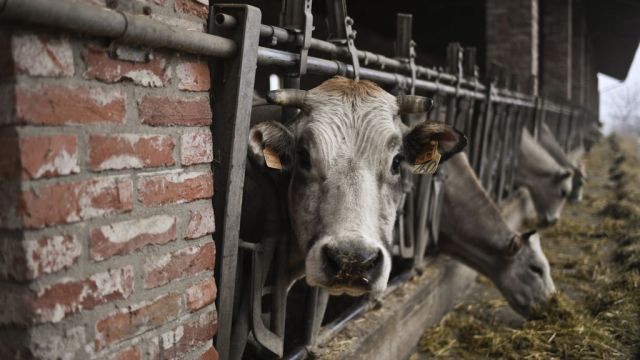‘Star Trek: Discovery’ Ends With A Recipe For Principled Extinction: Season 1, Episode 15 Recap

The season finale gets the one thing Star Trek is famous for — ethics — completely wrong.
Life is full of dilemmas whose solutions seem paradoxical. To obtain peace, you must prepare for war. Law and order are required for a free society. And that when you are facing the prospect of an enemy who is hellbent on your demise, you must forego your pacifist ideals and fight back. The Federation was built on the ideals of peace, but finds itself immersed in a war that it’s losing, and losing badly. Ships, starbases, and even entire planets have been wiped out in the war with the Klingons. Closest to home, Earth faces imminent destruction. How, then, should the Federation and Discovery proceed to try and literally save the world? The season finale of Star Trek: Discovery, “Will You Take My Hand?” offers an extraordinarily unsatisfactory answer.
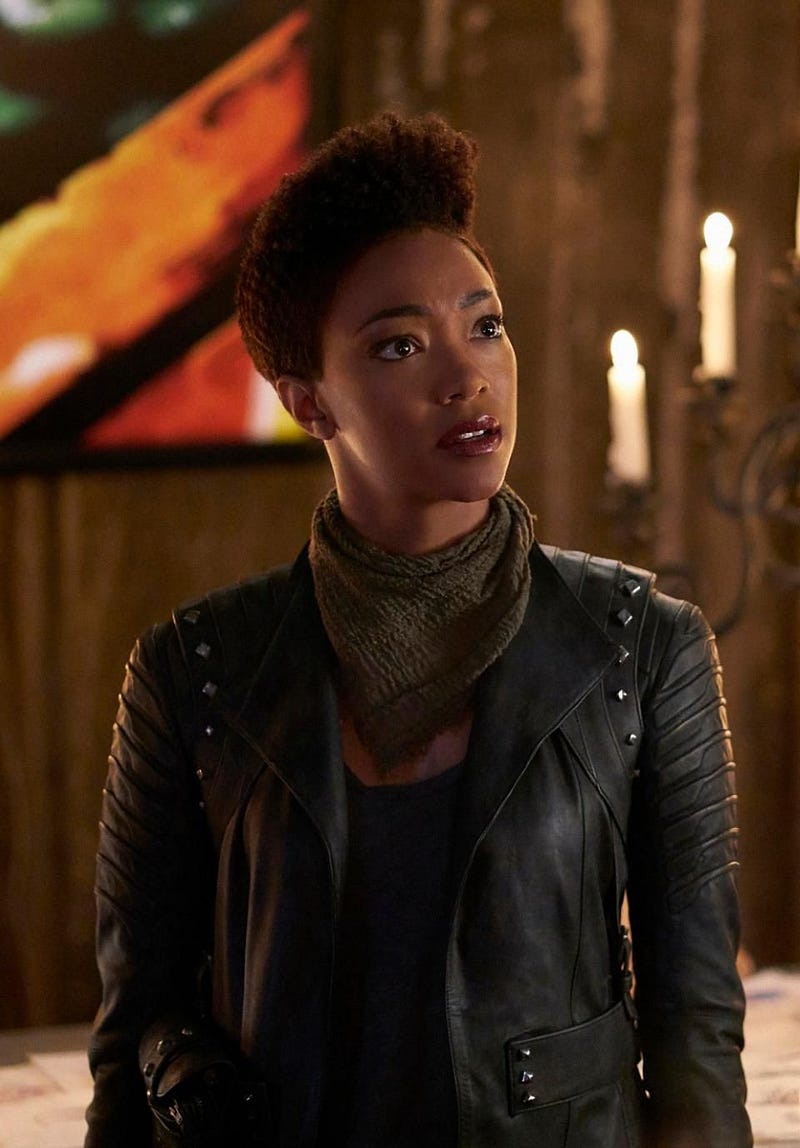
Recap: With Georgiou in charge, the bridge is being run very differently: militaristically, with the intent to strike a deadly blow at the heart of the Klingon Empire. The bridge officers are, one-by-one, put in their place by Georgiou, who sets the tone for the mission. This is a crushing military strike, one that will put an end to the Klingon homeworld. While this may be an un-Federation like tactic, dozens of Federation planets have already been destroyed, and fighting back is the only way to survive. Georgiou goes even a step further out of the crew’s comfort zone, and brutally beats the imprisoned L’Rell, attempting to torture the information of where to best strike Q’onos, and activate their dormant volcano system. Burnham’s declaration of “there’s another way” leads Georgiou to Tyler/Voq, where the Captain is skeptical that he’ll be of any use. But the knowledge of the surface is there, and Georgiou will be taking Tyler and Tilly with her to the surface.

Georgiou, Burnham, Tilly and Tyler head to the surface, under the guise of arms dealing on the surface. Georgiou immediately thrusts her crew into a situation they’re not comfortable in, cajoling Tilly to meet death threats with death threats at the outset. Then Georgiou goes a step further, going into an even seamier location to attempt to gather information. She goes off with two, um, “pleasure workers,” while Tilly is left to stand guard and Tyler and Burnham go into the gambling hall. Tilly immediately panics and huffs a volcano when offered, knocking herself out, while Burnham has a flashback to her abuse as Tyler aggressively plays a Klingon gambling game. As Tilly awakens, she finds the man who drugged her slowly cutting her valuables from her person. Offering no resistance, he volunteers information about the volcanic activity of this region and allows Tilly to grab the cutter from his hands, and she uses it to investigate the “drone box,” which contains a trigger for a hydrobomb.

Tilly quickly puts the pieces together, and realizes that the hydrobomb plus an active volcano will yield a life-destroying catastrophe that will have dire consequences for the entire planet of Q’onos. Tilly calls Burnham to warn her, and gets just enough information out before Georgiou returns, knocking Tilly out with a single blow.
Back on Discovery now, Burnham takes her case directly to Cornwell, who reminds everyone, lest they forgot, that the Federation is about to go extinct. Cornwell continues, only to get interrupted by Burnham.
Cornwell: “We do not have the luxury of our principles…”
Burnham: “That is ALL WE HAVE!”
Somehow, Cornwell allows Burnham to continue. As she goes on, Burnham asks, “Do we need a mutiny, today, to prove who we are?” Saru stands and responds, “We are Starfleet.” The crew stands up dramatically, in a show of solidarity.
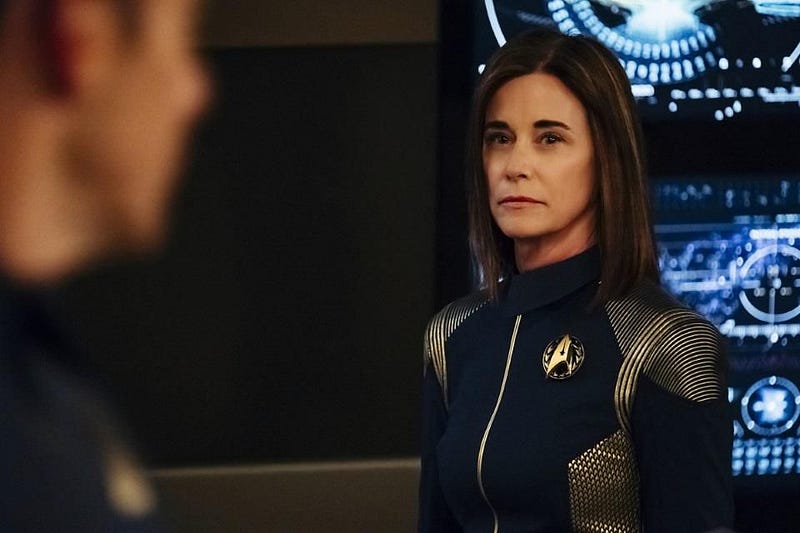
Shockingly, Burnham appears to have talked Cornwell into an alternate plan: to use L’Rell to fill the power vacuum since the deaths of T’Kuvma and, later, Kol. Tyler helps talk her into it, reminding her of who Voq was. Burnham and Tyler, in the aftermath, say their goodbyes, as Tyler chooses to go with L’Rell, to try and make a positive difference in the galaxy. Then, L’Rell makes her pitch, to the laughter of the remaining Klingons. But when she holds the detonator to the bomb in the interior of Q’onos, and makes her demands, the tide turns, and the other Klingons offer no resistance. Suddenly, hundreds of light years away, the Klingon fleet withdraws, and the war ends. Peace returns to the Federation, and Burnham reunites with her adoptive parents.

Burnham has her Commander rank restored, and she is officially pardoned by the Federation. She makes a grand speech about the ideals of Starfleet, about not giving into fear, about adhering to your principles even when the outcome is uncertain. Tilly, Stamets, Culber (posthumously), and Saru are all honored by the Federation. Finally, they all board Discovery again, and warp towards Vulcan, but intercept a distress call. They drop out of warp and hail the unknown vessel; it turns out to be Captain Pike from the USS Enterprise. And that’s where the first season comes to an end.
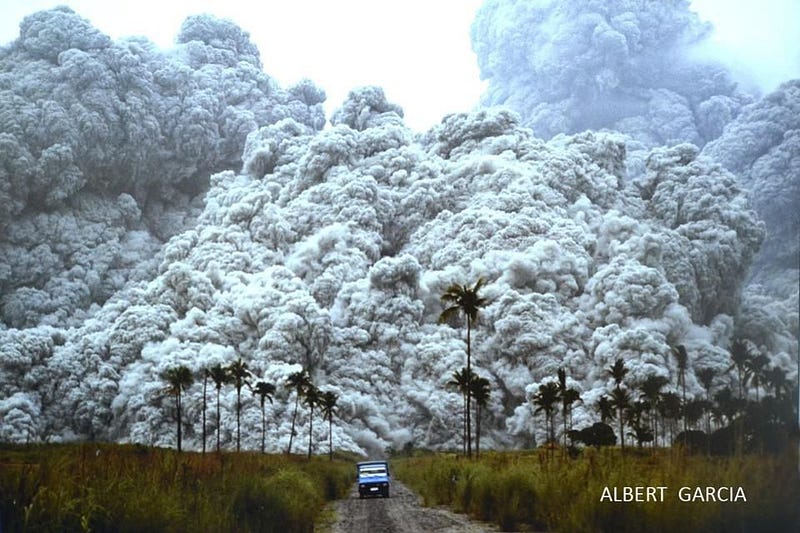
The science: Could a sufficient detonation in a volcanic tube deep within a planet cause a catastrophic, planet-killing event? This is the main science plot point in the finale episode of Star Trek: Discovery’s first season. In the interior of many Earth-sized worlds, we expect there to be a series of underground lava chambers, caused by a variety of processes. Some will be caused by the various layers sliding over one another in the Earth’s mantle, creating a magma chamber that can rise through the crust. Others may go even deeper, perhaps all the way down to the liquid, outer core in some cases. These active chambers could erupt continuously, such as at certain locations in the mid-oceanic ridges, or sporadically and all-at-once, such as in the case of certain supervolcanoes.

The explanation of a “hydrobomb” is interesting, simple, and worth investigating. They explain it in the show as a water-based bomb that will interact with a magma-rich reservoir, causing the water to boil to steam, expanding tremendously and causing a massive explosion. This should vent a huge amount of toxic material, eventually, into the planet’s atmosphere, potentially threatening all life on the world. The physical mechanism is sound, but as with all things, it depends on scale. In other words, you could make this happen with enough water; the question is quantitative: how much water do you need?
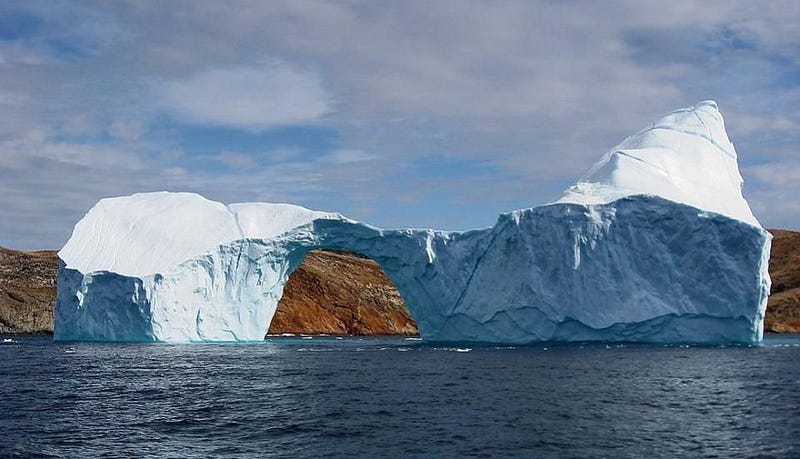
Whenever you look at a volcano, the level of destruction and atmospheric pollution that it causes can be measured according to the Volcanic Explosivity Index (VEI). The largest supervolcanoes have a VEI of 8, corresponding to 1,000 cubic kilometers or more of ejecta. Certain gases, like sulfur dioxide, may play a more important role in climatic changes than the overall ejecta, but these supervolcanoes are relatively rare (occurring less than once every 10,000 years on Earth) and the most powerful we know. Even at that, they’re not enough to extinguish terrestrial life, and are usually not even enough to cause a mass extinction event.

In order to release that much material, you’d typically need to inject that much material to start. Water (and of course, gaseous water) are far less dense than volcanic rock, including magma, but when you boil water, it can expand to many times its original volume. From the liquid water we know to water vapor at atmospheric pressure, that’s an expansion of a factor of a little over 1,000. For simplicity, even though this is generous, let’s assume that same factor of 1,000 is the amount of amplification that occurs; to get 1,000 cubic kilometers of ejects, you’d need 1 cubic kilometer of water to boil: about a billion tons of water.
Tilly tells us that Discovery has many such hydrobombs on board, while the ship itself is less than a cubic kilometer in size. The principle of the science may be viable, but in terms of execution, we’ll just have to let this one slide. Either that, or the Klingons should’ve called L’Rell’s bluff.
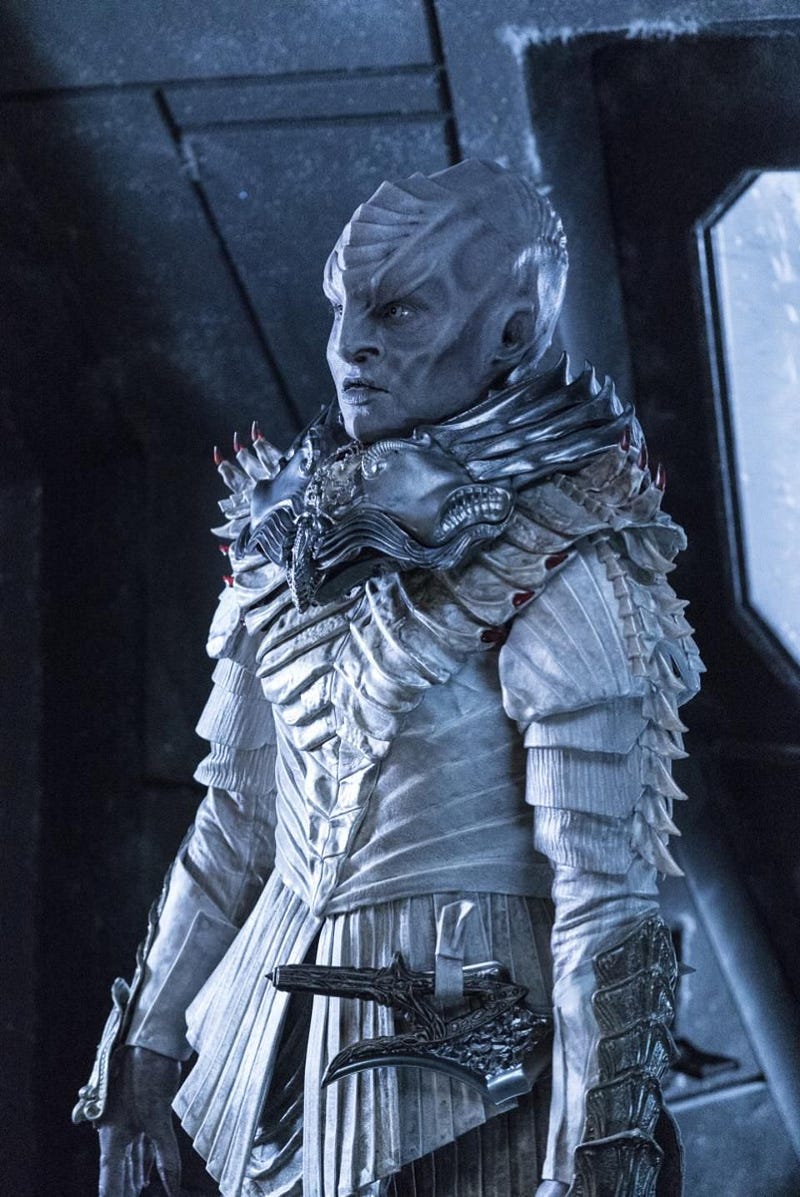
Right and wrong: “Are you with me, or are you against me,” Georgiou asks? With echoes of George W. Bush’s now-famous anti-terrorism speech, we’re meant to bristle at this suggestion that there are only two ways: the path of violence and the path of destruction. As we see her torture the captive L’Rell, question Tyler/Voq, and lead a cryptic mission into the area of Q’onos’s volcanic activity, Star Trek wants us to understand that she’s on the wrong path, willing to sacrifice everything that Starfleet stands for in order to survive. “You have already lost,” the beaten L’Rell tells Georgiou. If the Federation and Discovery follows through with their plan, we’re led to believe that they’ll sacrifice their ideals, and become no better than the Terran Empire.

“You look so much like her, younger maybe. But all that killing ages a person,” Georgiou tells Tilly, who protests that she’s not like the Tilly of the mirror Universe. “Don’t be so sure, Killy,” Georgiou retorts. And the thing is, we’re not sure. We want to believe in the ideals of Star Trek, but at the same time, we all have our breaking point. We all have a point where we need to fight back, or we simply die for nothing. How many innocents need to:
- be murdered by a dictator, before we stage a coup or go to war?
- be beaten up by a bully, before we organize and fight back to defeat them?
- die in a genocide, before we do what we can to save the remaining living members by whatever means necessary?
The first rule of any morality system is that you must survive. You must live. You must fight against your own extinction, not put the choice of whether you live-or-die in the hands of someone who’s shown that they will wantonly murder you if given the opportunity.
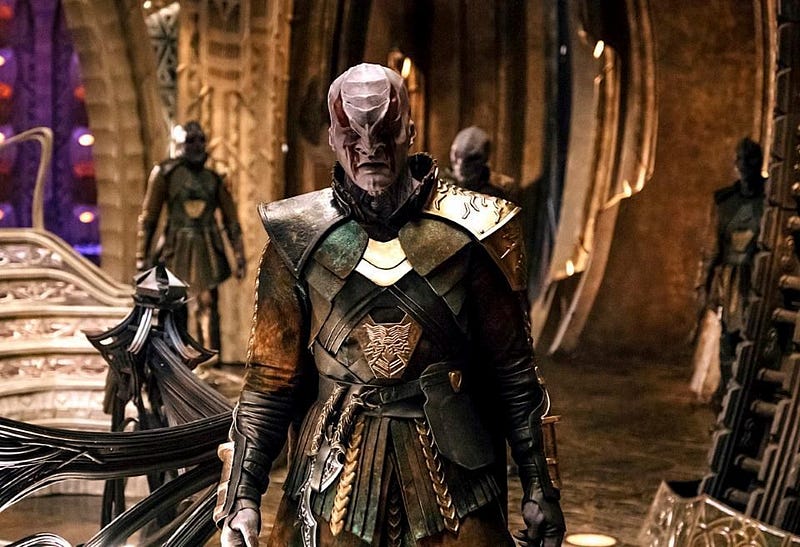
The Burnham/Cornwel conversation is at the heart of the exploration of right-and-wrong that’s the hallmark of Star Trek. It is also, unfortunately, a case where I think everyone involved with the show made an embarrassingly bad decision here. It’s a decision that Kirk wouldn’t have made; that Picard wouldn’t have made; that Sisko and Janeway wouldn’t have made. Here’s why.
Because you can’t just lay down and die in the face of an enemy. You cannot choose pacifism in the face of annihilation. You can’t give in and give up the fight. And you can’t adhere to your principles when your principles will lead you to certain death. Burnham is so eager to stand against what she sees as Georgiou’s moral absolutism, because she detests her morality. But her adherence to what she views as Starfleet’s moral absolutism is just as bad, because it sacrifices survival for principle.

The philosophy that we need today is not to pick the right morals to be absolutist about, but rather to embrace moral particularism, where we recognize that different situations call for different actions. When we have hundreds or thousands of school shootings per year, at what point do we say, “you know, maybe we do need some form of gun control at some level,” versus saying, “we have an absolute, uninfringeable right to own, possess, and bear arms?” As former Supreme Court Justice Stephen Breyer put it, “no single set of legal rules can capture the ever changing complexity of human life.” So it is with moral rules as well. The prime directive is the inviolable rule of Starfleet. You know, the one that every Captain absolutely violates when morality calls for it. But in a huge moment of disappointing cowardice, Discovery looks for a deus ex machinainstead: that their enemies will suddenly give up everything to empower a new leader using a terrorist, hostage-taking strategy.

Star Trek: Discovery had its ups-and-downs in terms of ethics this season, but at the most crucial moment, it chooses the path of cowardice posing as the moral high ground. It sets us up to be martyrs: righteous but dead. The plan with L’Rell was a dubious one, one that could’ve easily been ended with a single phaser blast and the utter annihilation of Earth and the entire Federation. If the hydrobomb plan was sound, it would be immoral not to use it. As it stands, the Federation lucks into its own continued existence, and we’re supposed to laud it as the right choice.
I will not. The choice that leads to your extinction or enslavement is not right at all. You must fight back. You must try to live. Burnham’s words are a surefire way to bring about a world where fascists and authoritarians take control; where lambs are led to slaughter by the wolf. An earlier episode of Star Trek: Discoverywas titled, “the butcher’s knife cares not for the lamb’s cry.” We were not meant to be lambs. It is what your enemies want: for you to be docile, and trust them with the decision of whether you live or die. Cornwell should never have been swayed; Georgiou should never have hesitated; Burnham should never have been listened to, much less lauded. There is a reason that we say “desperate times call for desperate measures.” Because if you don’t take them, you don’t live. You must fight for your own life. This was no ethics lesson; this was surrender.

The finale: PTSD is now on the other foot. We had seen it with Tyler, where he had flashbacks to being tortured by L’Rell, and those flashbacks rendered him not only useless as a soldier, but on the brink of a complete breakdown. But this time, Tyler is the trigger for Burnham’s PTSD. In an allusion that I regrettably missed last episode, this is, for many viewers, a stand-in for the real-life feelings brought up for survivors of domestic violence. Burnham and Tyler are now both survivors, and understandably, parting ways may be the best for them both. A part of me was hoping that Tyler and Burnham would have a baby together, and it would come out half Klingon/half human, and would lead to not only peace, but a re-evaluation of an alliance between Klingons and humans. Perhaps, in the end, Tyler and L’Rell will end up fulfilling that? (And maybe, with human DNA in there, Klingons will finally grow some hair?)
For the first 2/3rds of this episode, I was absolutely captivated by what a treasure Michelle Yeoh is. I wanted to see her succeed; I wanted to see her take the actions that no one else was willing to take. War is a horror, but if you don’t fight an opponent who’s willing to fight you to the death, you simply die. Although the show didn’t go in that direction, I find myself more compelled by her, at least for this episode, than any other member of the crew. Bonus points for the one-hit-destruction of Tilly.
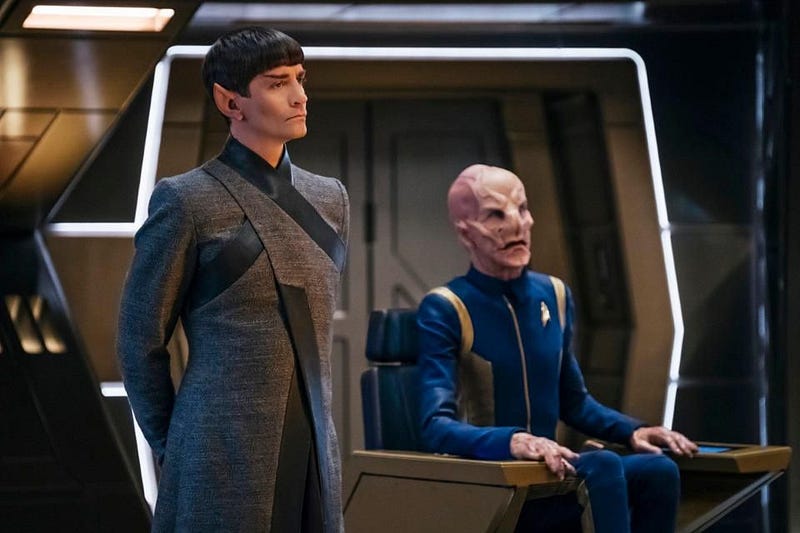
Conclusions: I have to give Star Trek: Discovery a lot of credit for taking some big risks, and for making sure to reach out to the fans. Having Discovery run into Pike’s Enterprise neatly link the show with the canon timeline of the original series, and provide fertile ground for where things might go in season 2. With the Klingon war behind them, they can get back to their mission of exploration and peace, which is the show many of us have been curious for all along. However, I’m skeptical that the crew will be able to put this experience behind them, and that the Federation won’t have tremendous lingering animosity concerning how they were almost annihilated, and how when the moment of truth came about, the crew of Discovery gave little thought to the fate of Earth.
This season had its ups-and-downs for me, and the finale was a bitter blow to what I was hoping for. Star Trek has always thrived on the border between science and science-fiction, and on forcing us to face up to the worst impulses inherent in being human. I would argue that one of our worst impulses is the very moral absolutism — of adhering to principle above all else — that the final episode lauds. I hope, down the road, that there are consequences for this decision. In the struggle for survival, the unskilled badger is still around, because it makes the most of what it has, and makes up for what it doesn’t have with tenacity. Any other predator could easily kill it; but they often decide it isn’t worth it. The crew of Discovery, and the 2250s Federation in general, desperately needs to learn the most important lesson that previous Star Trekfranchises have so thoroughly fought for: resistance is not futile.
Ethan Siegel is the author of Beyond the Galaxy and Treknology. You can pre-order his third book, currently in development: the Encyclopaedia Cosmologica.





